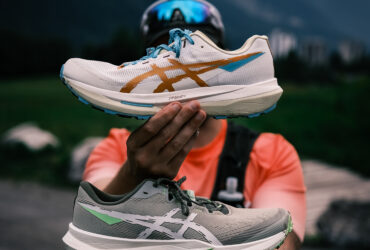Full face helmet, knee pads, gloves... Here are the essential equipments you need to have before starting downhill mountain biking.
It's decided: you're going to take a ski lift for the first time in summer. The aim is to ride down a mountain bike trail in a bike park, have fun... and avoid a fall. But it's not easy to guarantee a risk-free day's riding. So, before you get on your DH, here's what you need to know. a list of equipment not to be forgotten if you want to walk the slopes of the French massifs as safely as possible.
Protective vest / breastplate
Ok, we are talking about a protection that is not always the most comfortable to wear. But it remains essential for anyone who ventures on the bike parks' downhill. The professional riders are all equipped with a protective vest or a chest protector. The difference between the two? The chest protector protects the torso and back, while the protective vest also has sleeves to protect the arms (note that the back protector only protects the back).
If some vests are equipped with rigid protections, some manufacturers offer equipment with more flexible protections such as the D30. An orange honeycomb material that has the particularity of deforming slowly or quickly. This type of equipment is more expensive, but more comfortable to wear and just as protective as classic protective vests. For a good quality vest, you should expect to pay more than 200 euros.
Elbow and knee pads
If you opt for a bib, you'll need to add elbow pads to protect this part of the body, which is often very exposed in downhill mountain biking falls. Elbow pads are attached by elastic velcro fasteners at the ends. As with protective vests, elbow and knee pads are sometimes designed with more flexible technologies than simple rigid shells, such as VPD 2.0, a preformed foam that hardens on impact, providing excellent shock absorption while keeping the elbow pad in place during pedaling. Expect to pay around twenty euros for entry-level models, and upwards of 120 euros for top-quality elbow pads.
Full face helmet / Mask
Essential for downhill mountain biking, the full face helmet is not mandatory on all bike parks, but it is strongly recommended. The models and brands are numerous and range from about 50 euros for the cheapest to more than 500 euros for the models worn by professionals and also marketed to the general public. Note that in recent years, a new type of hybrid helmet has appeared that allows you to modulate your helmet according to the practice thanks to the detachable chin strap.
You can wear it in bowl mode for a more leisurely cross-country ride and put the chin strap on when you attack the more challenging descents. They are recommended when riding a bike. Their interest decreases when you only ride downhill in a bike park with ski lifts. In this case, choose a full face helmet, which is better ventilated. Finally, the mask is also not to be forgotten to obtain a maximum protection at the level of the face to have the best possible vision. Models without tint are marketed for about twenty euros, while top-of-the-range products at over 100 euros offer the possibility of easily changing the lenses and therefore the tint of the mask.
Coated gloves
If most downhill riders ride with gloves (except for some pros who always ride without them like New Zealander Sam Blenkinsop), we obviously advise you to opt for reinforced gloves. Models with real protection on the joints are rarer in mountain biking but you will understand their usefulness as soon as you fall. Some products offer reinforcements using D3O material on the metacarpals. This material becomes instantly very hard for an optimal shock absorption in case of a fall.
Other protections
In addition to the essentials mentioned above, you can also opt for shorts or undershorts with soft reinforcements on the outside of the thighs in particular. Ankle guards, shin guards and wrist guards are additional equipment that will minimize the consequences of a fall.









